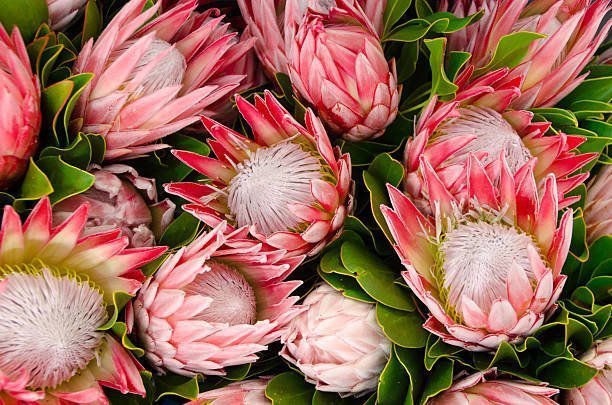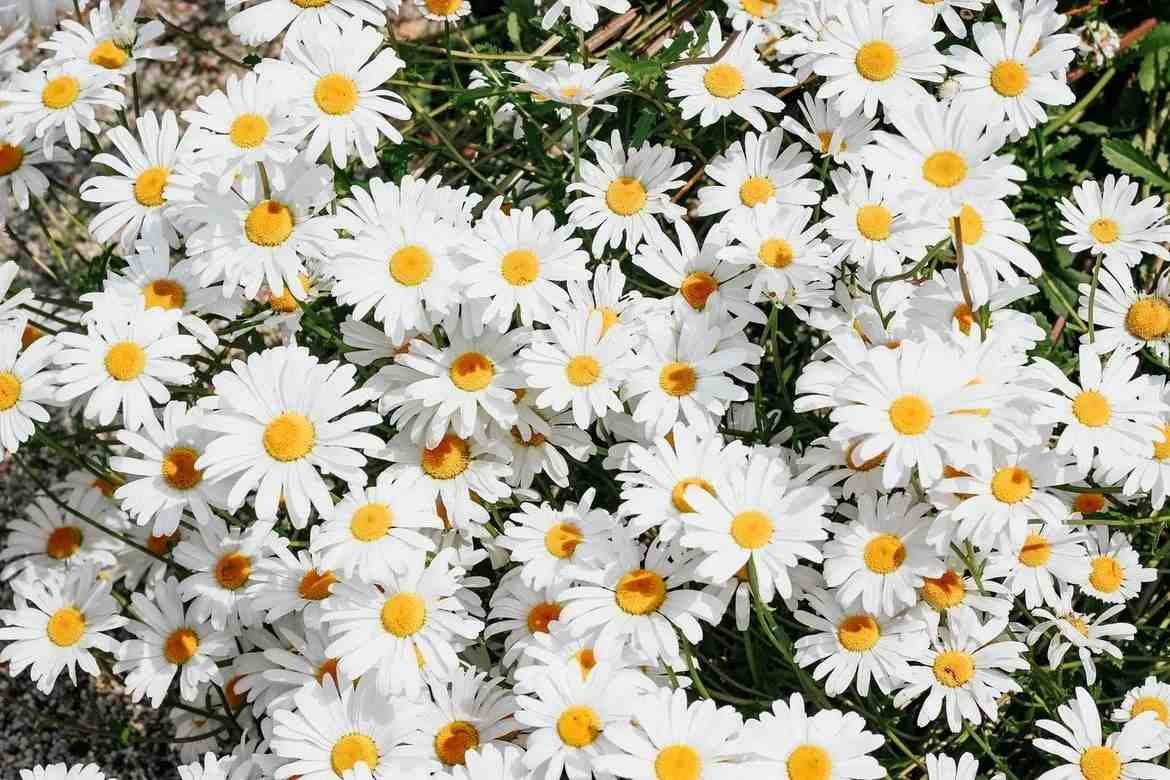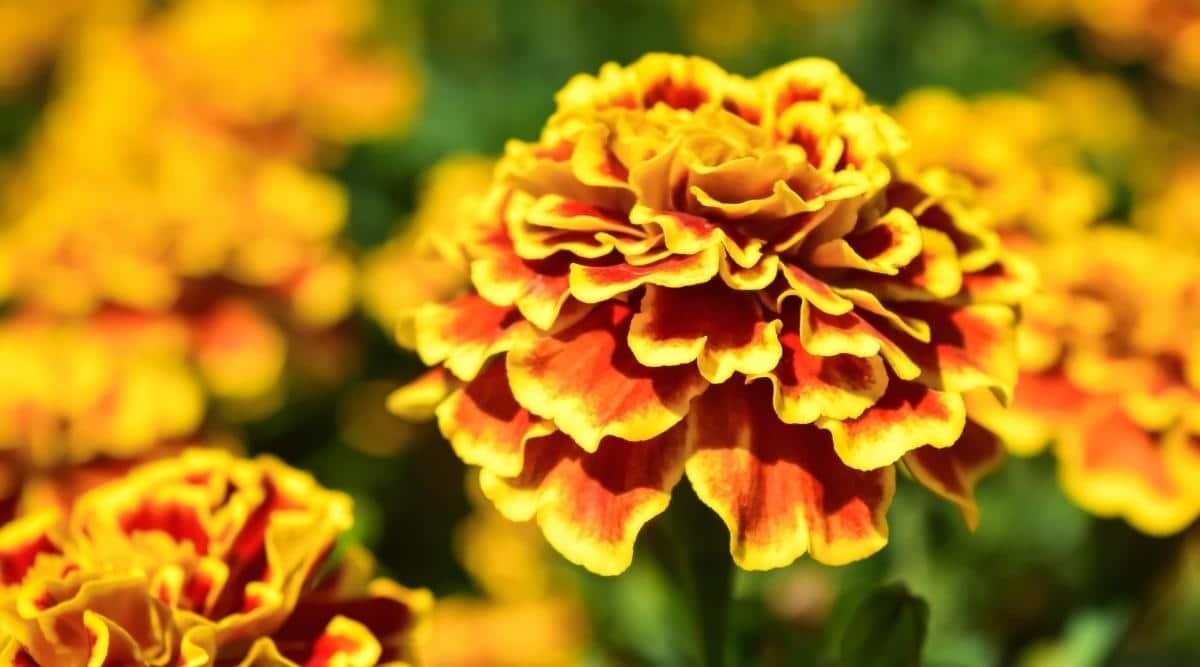Protea Flower Facts, Uses, Cultivation, Botany, Historical Significance
 Protea Flower Facts
Protea Flower FactsProtea Flower Facts | Description | Distribution and Habitat | Botany and evolution | Cultivation | Uses | Cultural | Interesting facts | frequently asked questions about Protea
If you’re a flower enthusiast searching for a unique and exquisite addition to your collection, look no further than the Protea. With its striking appearance and rich cultural history, this flower is a true marvel of the plant world. Named after the Greek god Proteus, who could change his form at will, the Protea boasts an array of shapes, sizes, and colors that will leave you in awe. From its bold, spiky petals to its delicate centers, the Protea is a stunning sight to behold. So why not add a touch of beauty to your life with this extraordinary flower? Discover the magic of the Protea today.
Taxonomy of Protea
| Kingdom | Plantae |
|---|---|
| Clade | Tracheophytes |
| Clade | Angiosperms |
| Clade | Eudicots |
| Order | Proteales |
| Family | Proteaceae |
| Genus | Protea |
Morphology of Protea
| Feature | Description |
|---|---|
| Flowering plant class | Magnoliopsida |
| Flowering plant subclass | Rosidae |
| Flowering plant order | Proteales |
| Flowering plant family | Proteaceae |
| Flowering plant genus | Protea |
| Flower color | Varies depending on species, can be pink, red, orange, yellow, cream, or white |
| Flower size | Varies depending on species, can range from 2 inches to over a foot in diameter |
| Petal count | Varies depending on species, can have as few as 4 petals or as many as 80 |
| Leaf shape | Oblong or lanceolate |
| Leaf arrangement | Alternate |
| Leaf margin | Smooth or toothed |
| Stem type | Woody |
| Fruit type | Follicle |
| Reproduction type | Hermaphrodite (both male and female reproductive organs present in the same flower) |

Description of Protea
The Protea is a flowering plant belonging to the Proteaceae family, which is native to South Africa. It is a striking and unique flower that comes in a variety of colors, including pink, red, orange, yellow, cream, and white. The flowers of the Protea are large and showy, with a distinctive cup-like shape that is surrounded by spiky, petal-like structures.
The Protea flower can range in size from two inches to over a foot in diameter, depending on the species. Some species of Protea have as few as four petals, while others have as many as 80. The leaves of the Protea are oblong or lanceolate in shape and are arranged alternately along the stem. They can have smooth or toothed margins.
The Protea is a woody plant, with a stem that is often thick and covered in a rough, bark-like texture. The fruit of the Protea is a follicle, which contains seeds that are dispersed by birds and other animals. The Protea is a hermaphrodite, meaning that it has both male and female reproductive organs in the same flower.
The Protea has a rich cultural history, and it is known by a variety of names, including sugarbush, king protea, and giant protea. It is often used in floral arrangements and is prized for its unique and striking appearance. The Protea is also the national flower of South Africa and is a symbol of diversity and resilience.
Distribution and habitat of Protea
The Protea flower is native to South Africa and is found primarily in the Cape Floristic Region, which is one of the world’s six floral kingdoms. The Cape Floristic Region is a biodiversity hotspot and is home to a diverse range of plant species, many of which are found nowhere else in the world.
Within the Cape Floristic Region, the Protea is found in a variety of habitats, including fynbos, renosterveld, and montane forests. Fynbos is a type of shrubland that is characterized by a high diversity of plant species, including many types of Protea. Renosterveld is a type of grassland that is also home to many species of Protea. Montane forests, which are found in the mountainous regions of South Africa, are also home to several species of Protea.
The distribution of the Protea flower within the Cape Floristic Region varies depending on the species. Some species of Protea are found only in a small area, while others are more widespread. The king protea, which is one of the most well-known species of Protea, is found primarily in the southwestern part of South Africa.
The Protea flower is adapted to the Mediterranean climate of the Cape Floristic Region, which is characterized by hot, dry summers and cool, wet winters. The Protea has a deep root system that allows it to access water during periods of drought. The thick, woody stems of the Protea also help it to withstand fire, which is a common occurrence in many of the habitats where it is found.
Botany and evolution of Protea
The Protea flower belongs to the genus Protea, which is part of the Proteaceae family. The family Proteaceae is an ancient group of flowering plants that originated in the southern hemisphere and is thought to have been present on Earth for over 100 million years.
The Protea genus is known for its unique and striking flowers, which are adapted to pollination by birds and other animals. The flowers of the Protea are large and showy, with a distinctive cup-like shape that is surrounded by spiky, petal-like structures. The flowers are also rich in nectar, which attracts pollinators.
The Protea is an example of convergent evolution, where different plant species develop similar characteristics in response to similar environmental pressures. The Protea is similar in appearance to other plant species found in different parts of the world, such as the Australian banksia and the South American grevillea. These plants are not closely related to the Protea, but they have developed similar adaptations for pollination by birds.
The Protea has a long and complex evolutionary history, with over 330 species found in the genus. The oldest known fossils of Protea flowers date back to the mid-Cretaceous period, around 90 million years ago. These fossils show that the basic structure of the Protea flower has remained relatively unchanged over millions of years.
The Protea has played an important role in the cultural and ecological history of South Africa. The flower has been used by indigenous peoples for medicinal and cultural purposes for thousands of years, and it is now recognized as an important symbol of South African biodiversity and cultural heritage.
Cultivation of Protea
The Protea flower is a popular ornamental plant and is cultivated in many parts of the world for its unique and striking appearance. The flower is typically grown in regions with a Mediterranean climate, where it can thrive in conditions similar to those found in its native habitat in South Africa.
The cultivation of the Protea flower requires well-drained soil and a sunny location. The plant is sensitive to frost and requires protection in colder climates. Proteas can be propagated by seed or by cuttings, and they typically take several years to reach maturity and produce flowers.
Protea flowers are typically harvested in the early morning, when they are at their peak of freshness. The flowers are often used in floral arrangements and can last for several weeks with proper care. Protea flowers are also popular as dried flowers and are often used in craft projects and home décor.
The Protea flower is a low-maintenance plant that is well-adapted to the dry conditions of many Mediterranean climates. However, it is susceptible to root rot and other diseases if grown in soils that are too wet. Proteas are also sensitive to excessive fertilizer and should be fertilized sparingly.
Overall, the cultivation of the Protea flower requires careful attention to soil and climate conditions, as well as proper harvesting and care of the flowers. With proper care, the Protea can be a beautiful and unique addition to any garden or floral arrangement.
Uses of Protea
The Protea flower is valued for its unique and striking appearance and is used in a variety of ways around the world. Here are some of the most common uses of the Protea flower:
- Ornamental purposes: The Protea flower is a popular choice for ornamental purposes, both fresh and dried. Its striking appearance makes it an ideal choice for use in floral arrangements, wreaths, and other decorative purposes.
- Medicinal uses: The Protea flower has been used for centuries by indigenous peoples in South Africa for its medicinal properties. The flower has been used to treat a variety of ailments, including fever, coughs, and stomach disorders.
- Food uses: The nectar of the Protea flower is a food source for many species of birds and insects, including the sugarbird and sunbird. In addition, the seeds of some species of Protea are edible and have been used as a food source by indigenous peoples in South Africa.
- Cultural uses: The Protea flower is an important symbol of South African culture and is featured prominently in art, literature, and other forms of cultural expression. The flower is also the national flower of South Africa.
- Commercial uses: The Protea flower has become a valuable commercial crop in many parts of the world. The flowers are grown for both fresh and dried markets and are used in a variety of commercial applications, including floristry, craft-making, and home decor.
Cultural and Historical Significance of Protea
The Protea flower is an important symbol of South African culture and history. The flower is featured prominently in art, literature, and other forms of cultural expression and is recognized as the national flower of South Africa.
The Protea has a long and rich history in South Africa, dating back thousands of years to when indigenous peoples used the flower for medicinal and cultural purposes. The flower was also used as a symbol of resistance during the apartheid era, and it remains an important symbol of hope and unity for many South Africans today.
In addition to its cultural significance, the Protea flower also has ecological significance. The flower is an important part of the unique fynbos biome found in South Africa, which is known for its rich biodiversity and unique plant species.
The Protea has also played a role in the economic development of South Africa, as the flower has become a valuable commercial crop in many parts of the world. The flower is grown for both fresh and dried markets and is used in a variety of commercial applications, including floristry, craft-making, and home decor.
Overall, the Protea flower is a beloved and important symbol of South African culture and history, as well as an important part of the country’s ecological and economic landscape.
Explanatory Notes for Protea
- Taxonomy: The Protea flower belongs to the Proteaceae family and is native to South Africa. It is a diverse genus that includes over 100 species, and the flowers come in a variety of colors and shapes.
- Morphology: The Protea flower is characterized by its unique and striking appearance. The flower typically has a large, cone-shaped center surrounded by a series of long, slender petals. The color of the flower can vary widely depending on the species, but it is typically bright and eye-catching.
- Distribution and habitat: The Protea flower is found primarily in South Africa, where it is an important part of the fynbos biome. The flower is adapted to dry, arid conditions and can be found in a variety of habitats, including mountains, heathlands, and grasslands.
- Botany and evolution: The Protea flower is an ancient species that has evolved over millions of years to survive in the unique conditions found in South Africa. The flower has adapted to attract pollinators and protect itself from predators, and it plays an important role in the ecology of the fynbos biome.
- Cultivation: The Protea flower is a popular ornamental plant that is cultivated in many parts of the world. The flower requires well-drained soil and a sunny location, and it is sensitive to frost and excessive fertilizer. The flower is typically harvested in the early morning, when it is at its peak of freshness.
- Uses: The Protea flower is valued for its unique and striking appearance and is used in a variety of ways around the world. It is used for ornamental, medicinal, food, cultural, and commercial purposes, and it is an important symbol of South African culture and history.
Interesting facts about Protea
Here are 10 interesting facts about the Protea flower:
- The Protea flower is named after the Greek god Proteus, who could change his form at will. The flower’s unique appearance is thought to resemble the many different forms of the god.
- Protea flowers can be found in a wide range of colors, including pink, white, yellow, orange, and red. Some species also have multi-colored flowers.
- The Protea flower is an important symbol of South African culture and is featured on the country’s currency, the rand.
- The Protea flower is a popular ornamental plant and is often used in floral arrangements, weddings, and other special events.
- Protea flowers are adapted to survive in dry, arid conditions and can often be found growing in rocky or sandy soils.
- The Protea is one of the oldest species of flowering plants, with fossil evidence dating back over 90 million years.
- The Protea flower is a source of nectar for many species of birds and insects, including the sunbird and sugarbird.
- Protea flowers are used in traditional medicine to treat a variety of ailments, including fever, stomach problems, and respiratory issues.
- Protea flowers are often used as symbols of love, courage, and strength in literature and art.
- The Protea flower has been hybridized with other species to create a wide range of unique and colorful cultivars, including the King Protea, the Queen Protea, and the Mink Protea.
General queries or frequently asked questions about Protea
What is the Protea flower?
The Protea flower is a unique and striking species of flowering plant that is native to South Africa. It is a diverse genus that includes over 100 species, and the flowers come in a variety of colors and shapes.
What does the Protea flower look like?
The Protea flower is characterized by its large, cone-shaped center surrounded by a series of long, slender petals. The color of the flower can vary widely depending on the species, but it is typically bright and eye-catching.
Where is the Protea flower found?
The Protea flower is primarily found in South Africa, where it is an important part of the fynbos biome. It can be found in a variety of habitats, including mountains, heathlands, and grasslands.
Is the Protea flower an ornamental plant?
Yes, the Protea flower is a popular ornamental plant and is often used in floral arrangements, weddings, and other special events. It is prized for its unique and striking appearance.
What is the cultural significance of the Protea flower?
The Protea flower is an important symbol of South African culture and history. It is featured on the country’s currency, the rand, and is often used in traditional ceremonies and rituals.
Can the Protea flower be grown outside of South Africa?
Yes, the Protea flower can be grown in many parts of the world, including Australia, New Zealand, and the United States. However, it requires well-drained soil and a sunny location, and it is sensitive to frost and excessive fertilizer.
What are the uses of the Protea flower?
The Protea flower is used for ornamental, medicinal, food, cultural, and commercial purposes. It is valued for its unique and striking appearance and is an important symbol of South African culture and history.
Is the Protea flower endangered?
Some species of Protea flowers are considered endangered due to habitat loss and other factors. However, many species are still abundant in the wild and are widely cultivated around the world.
Can the Protea flower be dried or preserved?
Yes, the Protea flower can be dried or preserved and used in a variety of crafts and decorations. It is often used in wreaths, garlands, and other floral arrangements.
What are the most common species of Protea flowers?
Some of the most common species of Protea flowers include the King Protea, the Queen Protea, the Mink Protea, and the Blushing Bride Protea. There are over 100 species of Protea flowers in total.
Conclusion
In conclusion, the Protea flower is a unique and striking species of flowering plant that is native to South Africa. It has a rich cultural and historical significance and is an important symbol of South African culture. The Protea flower is used for ornamental, medicinal, food, and commercial purposes, and it can be found in a variety of habitats. While some species of Protea flowers are considered endangered, many are still abundant in the wild and are widely cultivated around the world. Overall, the Protea flower is a beautiful and fascinating plant that continues to captivate and inspire people around the world.












